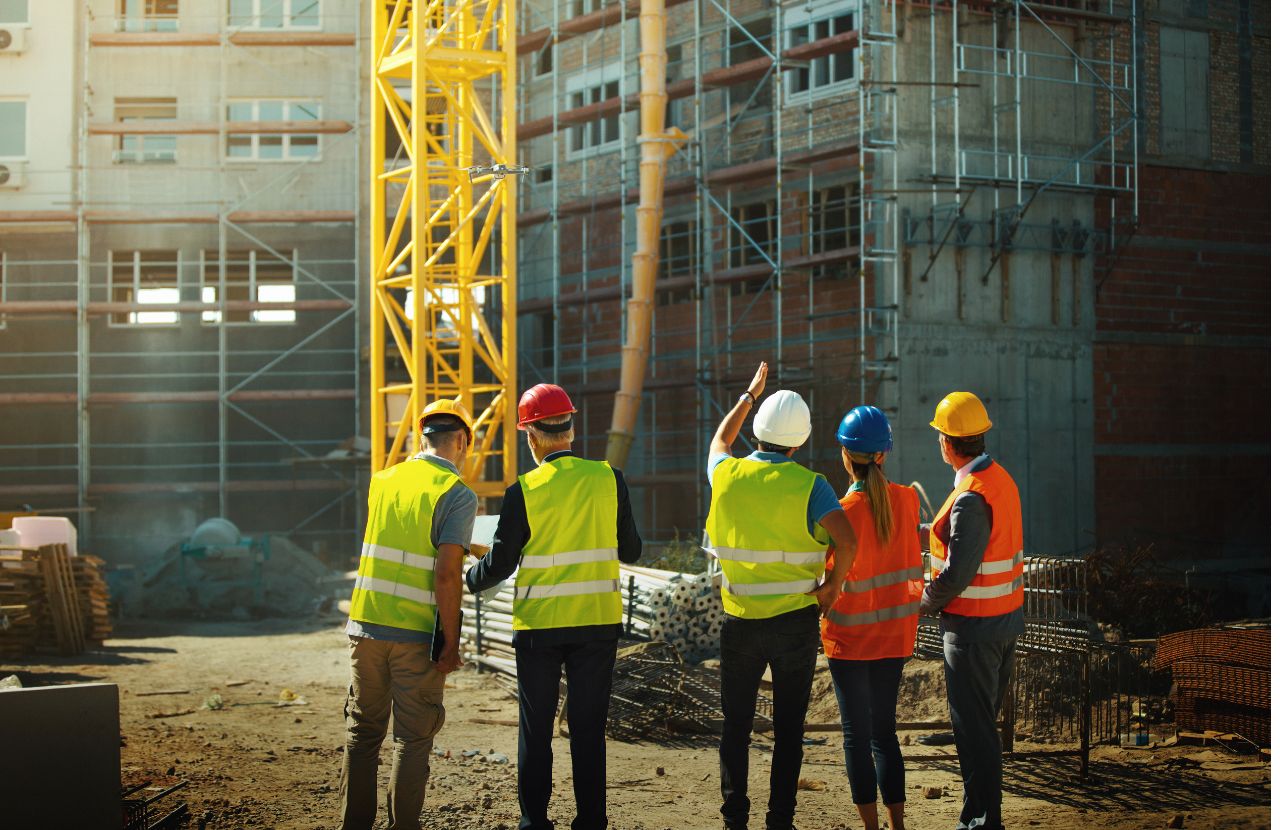
A construction method statement is an essential part of an organisation’s safe systems of work (SSOW). The document sets out the procedures and sequences of activities required to complete a specific task or activity safely and efficiently. It provides detailed instructions on how the work will be carried out, including the equipment, materials, personnel, and safety precautions involved.
In this guide we discuss the purpose of a method statement, when a method statement is needed and what it may cover.
Are method statements a legal requirement?
Method statements are not specifically mentioned in health and safety legislation. However, a method statement is an effective way to plan and manage construction work to ensure work is carried out safely in accordance with the Health and Safety at Work Act 1974, The Construction (Design and Management) Regulations 2015 and other health and safety legislation.
The Construction (Design and Management) Regulations 2015 require that the client (the person for whom the construction project is being carried out) has easy access to how health and safety hazards are addressed. A method statement can help demonstrate this requirement.
Under the Health and Safety Act 1974, employers must maintain safe systems of work for employees. A method statement, along with a detailed risk assessment, is part of a safe system of work. Having a method statement in place helps demonstrate legal compliance, protecting employees and the organisation.
What is a method statement in construction?
A method statement sets out, as clearly as possible, instructions to follow to make sure all tasks in a construction project are undertaken safely. It is vital that everyone involved in the construction project understands these safety instructions.
The method statement addresses risks that will have been identified in a risk assessment – these documents together are known as RAMS.
What are the benefits of a method statement for construction?
In 2022/23, 45 construction workers suffered fatal injuries and 53,000 suffered non-fatal injuries, so it is clear the risks are significant. It is important to note that asbestos is the largest cause of death in the construction industry, so providing asbestos awareness training is an essential aspect of risk management.
Implementing robust method statements and ensuring employees understand and follow them is vital. Method statements ensure employees are aware of the dangers and know how to protect themselves and others, reducing the likelihood of injuries.
When employees are provided with clear, comprehensive method statements this empowers them to make informed decisions and actively contribute to maintaining a safe, efficient working environment.
By reducing the likelihood of accidents method statements protect organisations from the financial and legal repercussions of workplace accidents. Injuries at work cost the construction industry an eye-watering £16.2bn a year with almost £4bn of these costs borne by employers.
A strong commitment to health and safety also enhances an organisation’s reputation as a responsible and reliable contractor, leading to further business opportunities.
When do you need a method statement?
High risk activities
Method statements are essential for high-risk activities.
High-risk activities include working at height, excavation and trenching, operating heavy machinery and equipment, working with hazardous materials, electrical work, and working in confined and enclosed spaces.
The risks between construction projects can vary significantly, even though the project goals may be similar. Hazards change if the worksite is different or there is a different team of contractors, for example.
Tendering
A tender method statement provides clear details about how a construction project will be carried out safely.
The method statement includes a detailed risk assessment, highlighting potential hazards and outlining the measures to mitigate them. This ensures that all parties involved, including the client and the contractors bidding for the project, have a comprehensive understanding of the proposed methods and procedures.
A construction method statement may include details of quality procedures, ensuring work meets required standards and specifications outlined in the tender documents.
Contractors may also use method statements to accurately estimate the costs of a project. By understanding the proposed methods and procedures, they can assess the resources and materials required.
What must be in a construction method statement?
A construction method statement should include as much information as necessary to keep people safe.
Here is an overview of what you might include to help ensure processes are well-planned, safe, and efficient. You might attach supporting documentation such as site drawings, permits and certificates.
Project overview
- Introduction. A brief description of the project, including location, work permits required, project start and end dates, the time required for specific tasks, and details of the parties involved.
- Objectives. The main goals of the project.
- Scope of work. Details of specific tasks involved and deliverables.
Hazards and risk mitigation
- Site layout. A plan showing the layout of the site, including access routes, storage areas and welfare facilities.
- Risk assessment. Potential hazards associated with construction activities, such as working at height, use of heavy materials, and hazardous materials, for example.
- Control measures. Details of the safety measures and controls that will be implemented to mitigate risks to protect the safety of workers and the public. This may include personal protective equipment (PPE), safety signage and training requirements.
- Emergency procedures. Who emergency contacts are, procedures to follow in an emergency, including evacuation procedures, first aid provisions and reporting protocols.
- Traffic management. Details of traffic management arrangements to minimise congestion and ensure vehicles and pedestrians are separated.
Instructions
- Construction sequence. A detailed sequence of construction activities.
- Methodology. The specific way construction activities will be carried out.
- Materials and equipment. The materials and equipment required for each task, including any special considerations.
- Quality control. The procedures for quality assurance and quality control to ensue work meets specific requirements.
- Environmental procedures. Any environmental impacts associated with construction activities, and measures to minimise disruption and environmental damage.
Who prepares a construction method statement?
A risk assessment and method statement (RAMS) must be prepared by a ‘competent person’.
Under the Health and Safety at Work etc. Act 1974, a competent person is someone who has the skills, knowledge, and experience relevant to the task.
The person preparing the RAMS must be able to identify hazards associated with certain tasks in a particular workplace and know the best ways to mitigate the risks. They must understand what training and supervision different employees require to carry out their work safely and what practical measures must be put in place.
It is the employer’s responsibility to ensure a competent person is appointed to assist them to meet their health and safety duties.
Do you need a RAMS for construction work?
Our health and safety consultants can act as your competent person to carry out a risk assessment and write your method statement, or we can review your existing RAMS to ensure your employees and organisation are protected.
At Praxis42 we have extensive experience of construction industry method statements. We can offer ongoing support throughout the risk management process, which can include reviewing and refining your RAMS as your organisation evolves.
Find out about our RAMS service or call our friendly advisors today on 0203 011 4242 to discuss how we can help you.

Adam Clarke
Managing Director (Consulting)
